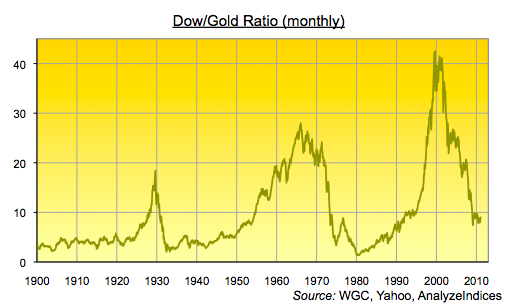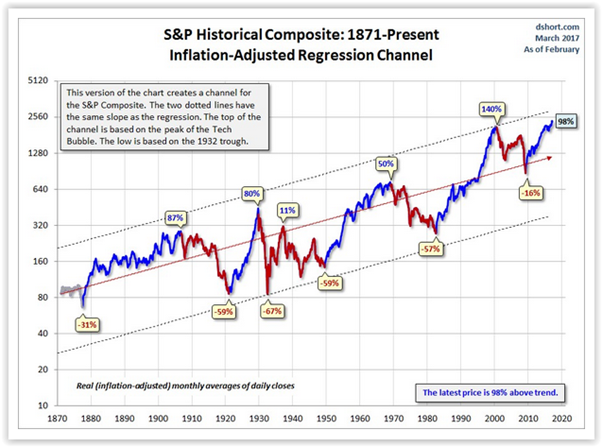Would it be possible in a world without money to establish the rate of return on present goods in terms of future goods? In a world without money all that one would have are the rates of exchanges between various present and future real goods. For instance, one present apple is exchanged for two potatoes in one-year’s time. Or, one shirt is exchanged for three tomatoes in a one-year’s time. All that we have here are various ratios.
There is, however, no way to establish from these ratios what the rate of return is for one present apple in terms of future potatoes (It is not possible to calculate the percentage since potatoes and apples are not the same goods). Likewise we cannot establish the rate of return on a shirt in terms of future tomatoes. In other words, we can only establish that one present apple is exchanged for two future potatoes, and one present shirt is exchanged for three future tomatoes. Only in the framework of the existence of money can the rate of return be established.
For instance, the time preference of a baker, which is established in accordance with his particular set-up, determines that he will be ready to lend ten dollars – which he has earned by selling ten loaves of bread – for a borrowers promise to repay eleven dollars in a one year’s time.
Similarly the time preference of a shoemaker, which is formed in accordance with his particular set-up, determines that he will be a willing borrower. In short, once the deal is accomplished both parties to this deal have benefited. The baker will get eleven dollars in one-year’s time that he values much more than his present ten dollars. For the shoemaker the value of the present ten dollars exceeds the value of eleven dollars in one-year time.
As one can see here, both money and the real factor (time preferences) are involved in establishing the market interest rate, which is 10%. Note that the baker has exchanged ten loaves of bread for money first, i.e. ten dollars. He then lends the ten-dollars for eleven dollars in one-year’s time. The interest rate that he secures for himself is 10%. In one-year’s time the baker can decide what goods to purchase with the obtained eleven dollars. As far as the shoemaker is concerned he must generate enough shoes in order to enable him to secure at least eleven dollars to repay the loan to the baker.
Observe however, that without the existence of money – the medium of exchange – the baker isn’t able to establish how much of future goods he must be paid for his ten loaves of bread that would comply with the rate of return of 10%.
Consequently, there cannot be any separation between real and financial market interest rates. There is only one interest rate, which is set by the interaction between individuals’ time preferences and the supply and demand for money.
Since the influences of demand and supply for money and individuals’ time preferences regarding interest rate formation are intertwined, there are no ways or means to isolate these influences. Hence, the commonly accepted practice of calculating the so-called real interest rate by subtracting percentage changes in the consumer price index from the market interest rate is erroneous.





“we can only establish that one present apple is exchanged for two future potatoes, and one present shirt is exchanged for three future tomatoes”
We could presumably also establish that whereas one present apple exchanges for two future potatoes, it exchanges for one current potato (a factor of two) and that whereas one present apple exchanges for 15 future bananas, it exchanges for five current bananas (a factor of three).
Equally, we could determine how the worth of a current versus a future apple compares from the perspective of the potato seller and the banana seller.
For a given basket of desired goods, then, I’d expect us to be able to infer something about the value of current vs future apples.
Maybe not, and maybe that’s not useful anyway. I haven’t had nearly enough caffeine this morning, so I’m probably missing something obvious.
Carl Menger in his Principles… established the evolution and need (in an advanced economy) for money.
As for interest rates – Frank Fetter in the United States and Ludwig Von Mises in Europe take this about as far as it has gone.
Presently we have money (of a sort), but we do not have rational interest rates. We do not have rational interest rates because (in every major nation) interest rates are NOT determined by the time preference of real savers and borrowers – they are determined by the “cheap money” policy of Central Bankers.
The “low interest rate” credit bubbles of ordinary bankers are limited (every credit expansion is about reducing interest rates below what real savers would demand – people who deny this are, to use a technical term, LIARS)as every, private, “boom” is followed by a “bust” (where the banker credit expansion shrinks back down towards the “monetary base”).
However, there is no natural limit on Central Bank (i.e. government backed) monetary expansion. The only limit on government backed monetary expansion is economic breakdown.
Starting from the Quantity Theory, pQ=mV one can write
p’/p+Q’/Q=m’/m+V’/V and get a dynamic equation by differentiating w/r to time after taking logs of both sides.
In a Say’s Law economy, m’/m = Q’/Q i.e. money growth is the same as real growth. Now
Q=aL so Q’/Q = a’/a+L’/L where a is labor productivity and L is labor force. Also, L’/L =
b’/b + E’/E where b is population growth and E is employment percentage so that
m’/m-d’/d = a’/a+b’/b+E’/E or m’/m = a’/a+b’/b+E’/E+d’/d =r is the real interest rate.
The market interest rate i = m’/m –> r through market arbitrage. When i = r, E’/E = 0 and an equilibrium is reached.
In a non-Say’s Law economy, m’/m = i+g and i+g –> tends to r where g is government money creation for public spending. In this case. i < r and interest rates are below r, the level demanded to sustain real growth.
Suppression of the interest rate via public spending leads to under-investment in the real economy. As a result the velocity of circulation declines exponentially.
Low velocity is the most prominent feature of the modern economy today.